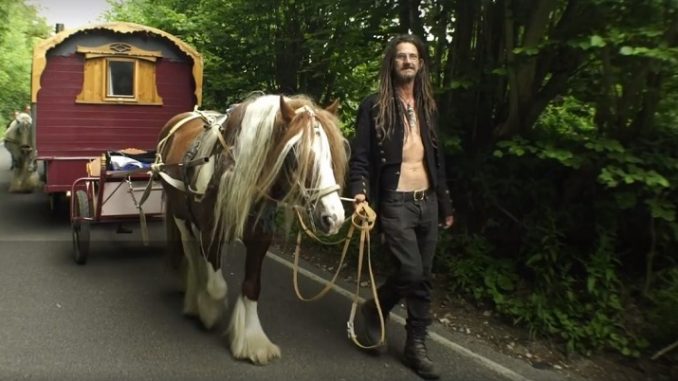
The last horse-drawn stage show in England is making a 160-mile pilgrimage from Stonehenge to Margate – led by a descendant of Victorian star Lord George Sanger, the founder of Dreamland predecessor, the Hall By The Sea.
Dave Sanger, who was one of the family members who officially reopened the Dreamland site in 2015, partner Amanda Chapman and baby Lord Sanger are at the head of a procession of travelling actors, musicians and performers.
They are making the journey to mark this year being the 150th since the Dreamland became a leisure site.
The expedition started in Stonehenge where they performed at Solstice on June 20 and will end in Margate where they’ll lead the carnival procession on August 6 and will then be at Dreamland with their travelling show.
Dave created a crowdfunder page to help fund the return to Margate.
On the page he says: “We will be walking some of The Pilgrims Way, alongside traditional wagons and horses, dressed in full Victorian costume.
“There will be pop up shows along the way and Pyratrix Circus will be presenting a performance based on Lord George Sanger’s book, 70 Years a Showman, accompanied by a dazzling array of marvellous musicians. This will be a very gentle acoustic adventure. Every day will be a parade.

“We are looking for support to bring Lord George Sanger’s story back to life in the spectacular style we feel it deserves. The more funds we raise the more fantastic the parade! Help us bring the magic back to Margate.”
The stage show pilgrimage has been helped in its journey by Margate-based Marine Studios.
Lord George Sanger and the Hall By The Sea
The land on Marine Terrace had been used by the London, Chatham and Dover Railway. When the station was moved away to a terminus further from the town the buildings were rented out to a business called Spiers and Ponds, who for a period of seven years, ran a place of entertainment that catered to the delights of Margate’s residents, as well as for the burgeoning number of day-trippers to the resort who were arriving by sea from London.
At the end of the tenure, the railway authorities failed to find a buyer, but it was subsequently purchased by Thomas Dalby Reeve, the ex-mayor of Margate, for a sum of £3,750.00. The property acquired included the Hall premises and some allotments at the rear, On Dalby Reeve’s death in 1875, ‘Lord’ George Sanger took sole ownership of the property.
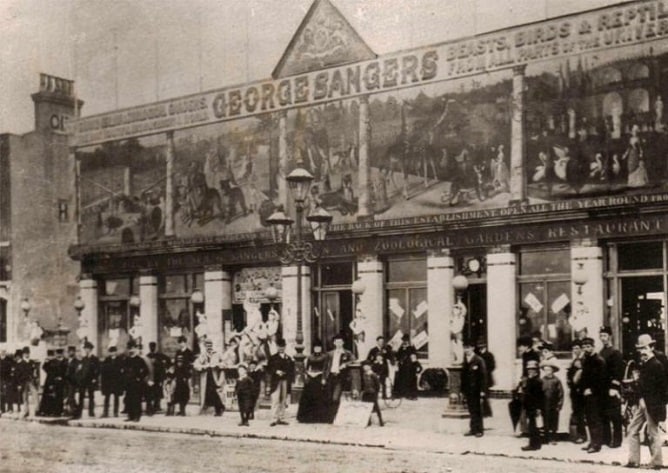
Sanger was an illiterate showman of vast business acumen and energy. The son of an itinerant showman, James Sanger whom, it is said served as a press-ganged sailor on Nelson’s ‘Victory’ at Trafalgar, it is claimed that George Sanger’s earliest shows featured a flotilla of miniature ships that fired tiny fireworks whilst being towed by goldfish!
Sanger, with his brother John, began a travelling circus which toured the United Kingdom. In 1849, he married the celebrated ‘Lion Queen’ Ellen Chapman. She would later appear in Sanger’s circus parade as Britannia, with a live lion at her feet.
The Hall by the Sea land was sold to the Mayor of Margate, Alderman Thomas Dalby Reeve. Reeve’s son, Arthur, married Harriet Sanger, the daughter of Lord George and the two older men entered into a partnership.
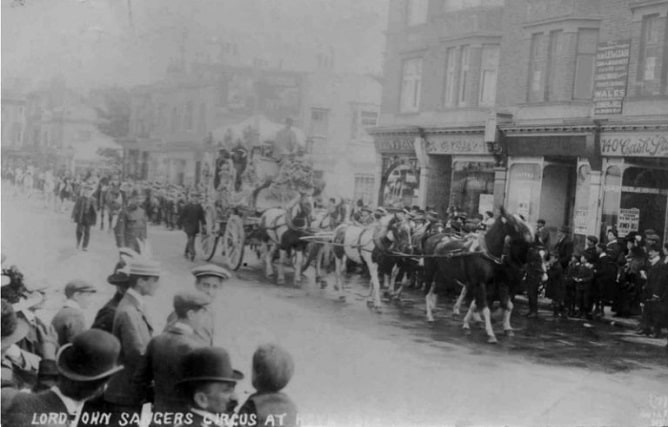
After Reeve’s death in 1875, Sanger became both owner and proprietor. He ran the venue as a music hall and bar, with dances in the evenings, later opening a roller-skating arena to cater for the latest craze then sweeping the country. Installing 8000 square feet of maple flooring, and with daily demonstrations by one ‘Professor’ Chambers, named ‘the Skateorial King’, who schooled the more faint-hearted participants in the new art, the skating enterprise was a huge success.
Sanger’s first enterprising act was to reduce the price of admission to the dancehall from five shillings to one, which resulted in a huge influx of attendees to the Hall-by-the-Sea. He then turned the land behind the Hall into an ornamental pleasure garden, complete with ‘ruined abbey’ folly, a lake, statuary and, most notably, a menagerie. Sanger’s principle motive for the opening of the zoo was as a breeding and training place for the animals he employed in the travelling circus and at Astley’s Amphitheatre in London’s Westminster Bridge Road, which he had taken over in 1871. He was credited as the instigator of the famous ‘Three-Ringed Circus’ concept, and introduced the first Wild West shows into England.
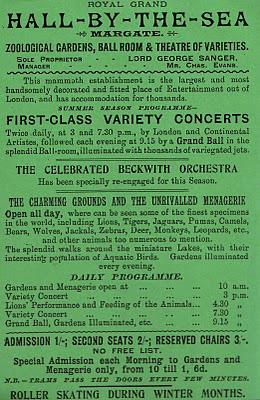
Sanger’s Hall-by-the-Sea Menagerie occupied the western half of the present Dreamland site. The railway embankment was remodelled into a series of terraces which featured walkways with trees, interspersed with copies of Roman statuary made from cement and painted to resemble marble. Against the western and southern boundary to the park, a wall was built which served to prevent views of the railway line that served the Margate terminus.
Against this wall, Sanger built the abbey folly, a groundsman’s cottage and three animal cages designed, it is said, to contain live bears. Sections of the wall, a small portion of the cottage and the cages were listed in 2009.
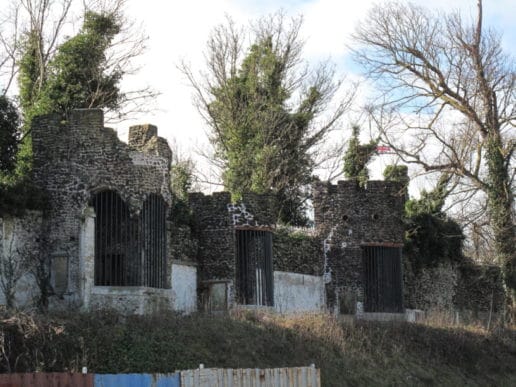
The cages, which date from the early 1870s, are an extremely rare survival from the Victorian era. The menagerie contained lions, tigers, baboons, leopards and wolves. There was a slaughterhouse behind the main building which was screened by trees. The pleasure gardens contained a series of ornamental lakes, stocked with waterfowl. Tea gardens and refreshment kiosks were situated nearby, and there was also an area given over to amusements such as swing boats, roundabouts and an early waxwork show.
At night, the gardens were illuminated with hundreds of Chinese lanterns suspended from the trees, and there were regular firework displays to delight the nocturnal visitors.
Sanger retired from business in 1905. He was murdered by a disgruntled employee in 1911.
HIs funeral cortege was as elaborate as his circus parades, and he is interred in an elaborate tomb in Margate cemetery, next to which is that of his brother John, which is crowned by an impressive marble Mazeppa stallion.
In 1919, John Henry Iles bought the Hall from Sanger’s daughter and son-in-law and created the Dreamland amusement park.
(Details with thanks from Dreamland, Ramsgate History, Margate History and Virtual Victorian blogspot)

